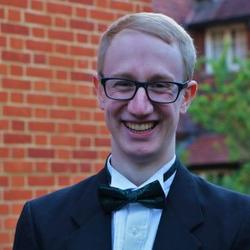Research
Supervisor: Dr Helle Jorgensen
Title: Investigating the Mechanisms Underlying the Heterogeneous VSMC Injury Response
Abstract: In healthy blood vessels, vascular smooth muscle cells (VSMCs) exist in a contractile, quiescent state but can switch phenotype to activate proliferation, migration and remodelling of the extracellular matrix. Phenotypically switched VSMCs contribute the majority of cells within neointimal lesions, characteristic of atherosclerosis and in-stent restenosis, diseases that underlie heart attack and stroke. Using multicolour “Confetti” VSMC-specific genetic lineage tracing in animal models of vascular disease, our lab previously showed that the extensive VSMC contribution to these lesions results from clonal expansion of few cells. To understand how the oligoclonality of the VSMC contribution to neointimal lesions arises and to understand the mechanisms activating VSMC proliferation in vivo, I have quantified VSMC proliferation and clonal development over time after acute vascular injury using confocal microscopy of wholemounted arteries. I observed that, from day 5 post-injury, proliferation is induced in a small number of VSMCs that clonally expand to form patches in the medial layer. The number and size of medial patches increase continuously during the first two weeks post-injury, suggesting that the oligoclonality observed in lesions results from selective activation of proliferation in a small subset of VSMCs. Expanding VSMC clones are restricted to arterial bulges which display VSMC death and recruitment of immune cells to the vessel wall, implicating these events as potential sources of proliferation-inducing cues. Interestingly, only a subset of medial patches traverses the internal elastic lamina and gives rise to neointimal patches, suggesting that a second selective event contributes at least partially to the observed oligoclonality. Profiling of chromatin accessibility in contractile and activated VSMCs from healthy and injured vessels respectively revealed activation-induced opening of chromatin at loci associated with phenotypic switching (Spp1, Ly6a/Sca1) and cell cycle (Mki67) and implicated the AP-1 factors as potential drivers of these changes. Newly identified genes and pathways associated with activation-specific open chromatin could represent novel therapeutic targets to reduce or prevent neointimal lesion formation.

